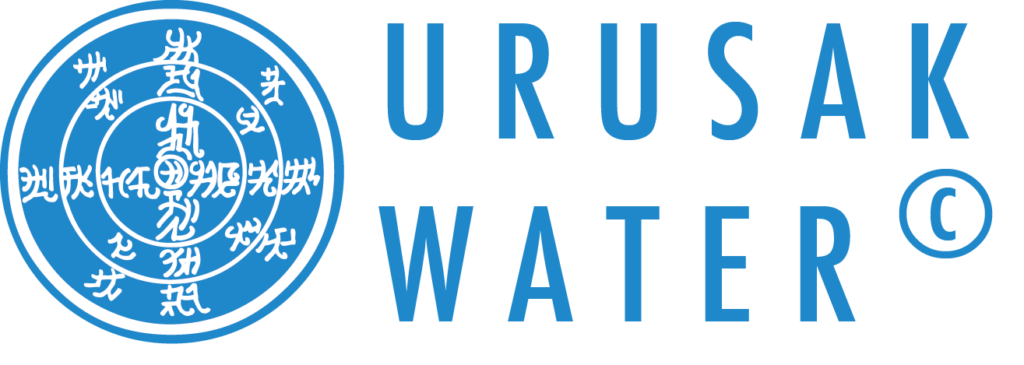Where do you start? The description of the Pleiadean Water of Enlightened Mastery (the Urusak Waterdevice) that was received was clear to a point, but also raised questions. Questions as in dimensions of the different components, materials that could be used, etc.
From the knowledge we have about materials, the possible health implications related to some of them, I made a decision on what to use and why. Making a decision is one thing, finding the right partner to create and deliver those components is another thing!
So what components do we need?
- The spiral, the center piece of the device.
- The horizontal platform for the wheels and the crystals.
- Clear crystals.
- The wheels, alchemical equation and Angel name
- The water containers:
- Carafe to pour the water,
- container to collect the water,
- an easy way to use it.
I decided to concentrate on the spiral first.
Pour the water through twelve clear coils, first to the feminine it goes. Six coils above and six below.
from the transmission of the Urusak
If this component could not be manufactured/created, the project would fail. The spiral, the center piece of the device, presented the first challenge. Who could create such a piece of art? I wanted to have all the components coming into actual physical contact with the water made of glass. Most plastics have plasticizers (like Bisphenol A (BPA)) which are hazardous to your health. Getting a plastic that is actually BPA free would require an entirely different and expensive approach.
Thinking in possibilities and not impossibilities, I considered professionals who work with glass which brought me to the Neon artists. I knew they were working with glass tubes which they could manipulate in different forms and sizes. What I did not know was whether this glass was suitable for this device where the end product would be for human consumption.
I looked up 7 Neon commercial artists on the internet advising them what I required and whether the glass would be suitable for the use I had in mind. Subsequently, I enquired whether they were interested in embarking on this adventure.
After several weeks waiting, I had one answer. This company came back to me with good information and the answer that the glass used for Neon art is not suitable for my requirements – it is too brittle. However, a solution was offered in the form of Pirex (tempered) glass. This is the same glass as used for cooking materials (oven dishes) which need to sustain high temperatures and be very sturdy. To form this glass into a spiral is difficult though due to its high melting point.
What were the different options and the decisions required?
-
1 spiral or 2 separate spirals?
This has been both a constructional and a practical decision. How to move a complete spiral properly to the middle of the plate? A slit can be made from one side to the center of the horizontal plate with a width slightly wider than de outer diameter of the tube. This however didn’t feel right. It compromises the integrity of the horizontal plate (which had to be thicker and therefor heavier and more expensive to compensate), but more importantly it breaks the flow of the 6 Wheels. The other thing to consider is that a complete spiral is more fragile than 2 separate pieces and more difficult to handle and clean. -
Connection of the 2 separate spirals?
Once we made the decision to create 2 separate spirals, another challenge presented. How to connect the 2 spirals? After discussing several options we elected the option where a socket was attached on the bottom spiral in which the top spiral would be affixed. -
How to place and hold the spiral in place?
There are several options. The first option is to create some kind of platform (pillars, etc.). This is something that will be considered once the prototype is made and assembly of the 2 spirals and horizontal plate can be achieved. -
Size and diameter of the glass tube?
This has both a pratical (money) and functional decision. To make the piece less expensive than necessary a standard tube was chosen which provided good water flow rate.
After several meetings and discussing the different options we agreed to develop a prototype. From our discussions: The prototype would be made out of Pyrex glass, formed from 2 separate connecting parts (the top spiral and the bottom spiral) with a socket connection, an outer diameter of ±10cm/3.9″ and a funnel at the top. This would be a custom job.

